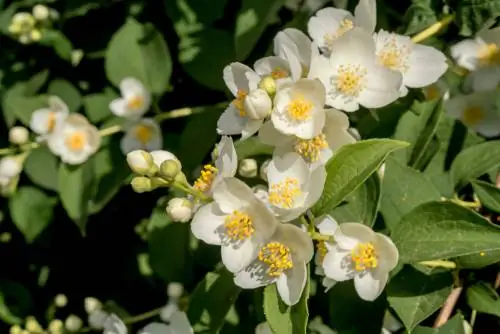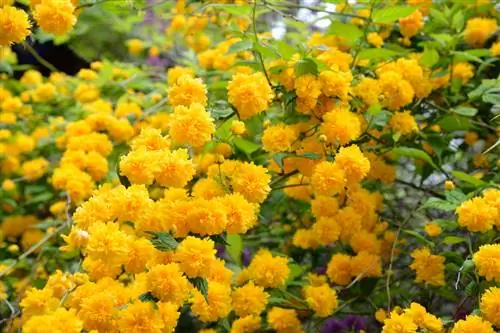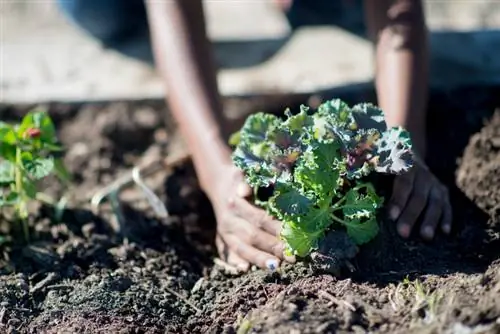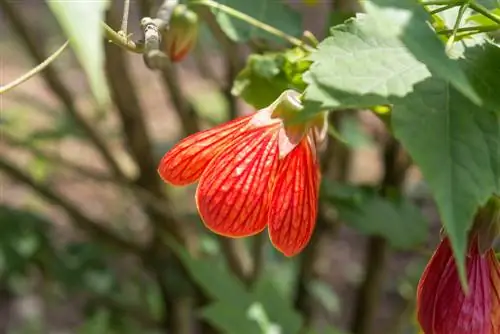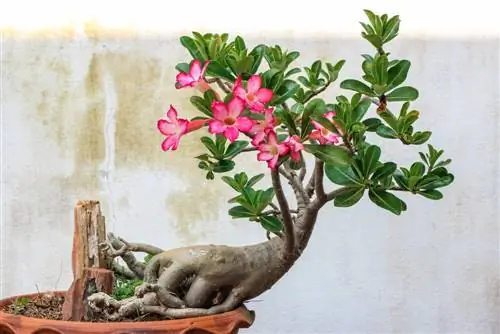- Author admin [email protected].
- Public 2023-12-25 17:45.
- Last modified 2025-01-23 11:22.
The beguiling scent announces the presence of the pipe bush from a distance. Its concentrated floral splendor creates a picturesque scenario as a majestic solitaire or lush hedge. The following answers to frequently asked questions show how easy this opulent ornamental tree is to cultivate.

How do you properly care for a pipe bush?
The pipe bush is an easy-care ornamental tree that thrives in sunny to partially shaded locations with humus-rich, well-drained garden soil. In the spring it receives compost as a starter fertilizer and a light topiary is carried out after the flowering period. Winter protection is recommended in the year of planting.
Planting the pipe bush correctly
Plant a pipe bush in autumn in a sunny to partially shaded location. While you weed and loosen the garden soil, the still potted root ball is soaked in a bucket of water. So that the powerful heart root system can spread unhindered, the planting pit should have twice the volume of the root ball. How to proceed:
- Enrich the excavation with bark humus (€17.00 on Amazon), compost, horn shavings or horse manure
- Unpot the plant, insert it in the middle, surround it with soil, press down and water
- Spread a layer of mulch with leaves, grass clippings or bark mulch
Make sure that the previous planting depth is maintained as far as possible. Finally, shorten the shoots by a third to support lush branching.
Care tips
The uncomplicated care program poses no hurdles, even for beginner hobby gardeners. How to do it right:
- Watere regularly during the year of planting, later only when the summer is dry
- Starting fertilization with compost gets growth going in March
- Light topiary immediately after flowering
- Rejuvenation pruning preferably in autumn and winter, during the leafless period
Light winter protection is recommended in the year of planting, as frost hardiness only builds up over time. To do this, before the first frost, spread a thick layer of autumn leaves on the root disk, which is secured with pine fronds.read more
Which location is suitable?
The frugal unpretentiousness is expressed not least in the broad location amplitude. The pipe bush thrives tirelessly in all sunny to partially shaded locations with normal garden soil. Ideally, the soil is humus, nutrient-rich, fresh and, above all, well-drained. Where these ideal conditions are not present, soil additives provide compensation. Too dry, lean soil is optimized with compost, bark humus or horse manure. Loosen clayey soil with a tendency to compaction with quartz sand, fine grit or lava granules. We only strongly advise against cultivating farmer's jasmine in a location where there is a risk of waterlogging.read more
When is flowering time?
The diverse genus of pipe bushes presents us with species and varieties that bloom at different times. If you can't get enough of the breathtaking abundance of flowers and the seductive scent, combine the hybrids and species cleverly for an extra long flowering period. The following suggestions may serve as your inspiration:
- Farmer jasmine: flowering period from May to June
- Double garden jasmine: flowering period from the end of May to mid-June
- False Jasmine Girandole or Dame Blanche: flowering period from June to July
Although a pipe bush per se does not have the potential for rebloom, efforts are sometimes still rewarded. Immediately after the first flowering, cut out all withered flowers and add a little compost to the root disk.read more
Cut the pipe bush correctly
Although the flowering period extends into summer, the pipe bush is not treated as a summer bloomer in terms of topiary. In fact, the tree blooms like a spring bloomer on last year's wood. A cut in early spring robs the plant of its already established buds. Therefore, shorten shoots that are too long at the end of the flowering period.
For a comprehensive rejuvenation cut, however, choose a frost-free day in late winter by cutting off all branches to a height of 30 cm. Although this measure is at the expense of this year's flowers, it is rewarded with vital and lush new growth. Thanks to this prudence, you can reduce the stress on a pipe bush to a minimum during the leafless period. On this occasion, the wood is also thoroughly thinned out by removing dead wood, stunted, diseased and frozen branches at the base. Every 2 to 3 years, cut out any excess wood. This can be recognized by the darker and cracked bark.read more
Watering the pipe bush
While freshly planted pipe bushes require a regular supply of water, the need for watering decreases as they age. In the first few months, keep the soil constantly moist without causing waterlogging. This is especially true after a spring planting. In later years, water the flowering shrub whenever the natural rainfall is not sufficient.
Fertilize the pipe bush properly
Starting fertilization in March stimulates growth and flowering. Pamper your pipe bush with a portion of compost and horn shavings, nettle manure, horse manure or guano granules. Since the ornamental tree is naturally vigorous, it supplies itself for the rest of the season via its strong root system.
Wintering
An adult pipe bush is completely hardy and can get through the cold season he althy without any gardening measures. Since the frost hardiness of young plants gradually builds up, we recommend light winter protection in the planting year. To do this, cover the root disc with a layer of grass clippings, autumn leaves or needle twigs. The buds that have already been planted are given a cover made of jute ribbons or garden fleece.
Propagate pipe bush
Propagation from cuttings has proven to be excellent in practice for the pipe bush. Breeding is so easy:
- Cut semi-lignified head cuttings with a length of 10-15 cm in June
- Defoliate the bottom area so that at least 1 pair of leaves remains at the top
- Fill small pots with lean substrate to plant two-thirds of the cuttings
- Water, put on a transparent hood and let it root in a partially shaded location
Keep your children constantly moist and protect them from direct sunlight. A fresh shoot signals successful rooting. By autumn, more than 50 percent of the cuttings will have developed into vital young plants.read more
Pipe bush in a pot
Due to its extensive heart root system, a pipe bush rarely feels comfortable in a pot. This fact also applies to powerful farmer's jasmine with a height of up to 300 cm as well as to the compact hybrids with a height of up to 150 cm. Even with optimal water and nutrient supply, a false jasmine in a pot usually falls far short of expectations in terms of growth and abundance of flowers.
Is pipe bush poisonous?
The poison content of pipe bushes is controversially discussed among hobby gardeners. We wanted to know exactly and asked the botanists at the University of Bonn. So far, no study has been able to prove any toxic content, so there can be no question of even marginal toxicity. So you can also enjoy the magnificent ornamental trees in the family garden.read more
Trivia
The pipe bush got its unusual name because its branches can be transformed into a children's instrument in just a few simple steps. The pulp can be easily removed from the shoots. Drill small holes in it with a needle and the little pipe is ready.
Beautiful varieties
- Farmer's jasmine: Majestic pipe bush, up to 300 cm tall and creamy white, fragrant flowers
- Virginal: Premium variety with double, snow-white flowers in spring with simple rebloom in autumn
- Belle Etoile: Compact, 100 cm tall pipe bush whose white flowers are adorned with a pink eye
- Dame Blanche: Charming flowering shrub for the scented garden with semi-double flowers; ideal as a vase decoration
- Erectus: Elegant pipe bush that attracts hordes of butterflies with its seductive scent and white flowers

